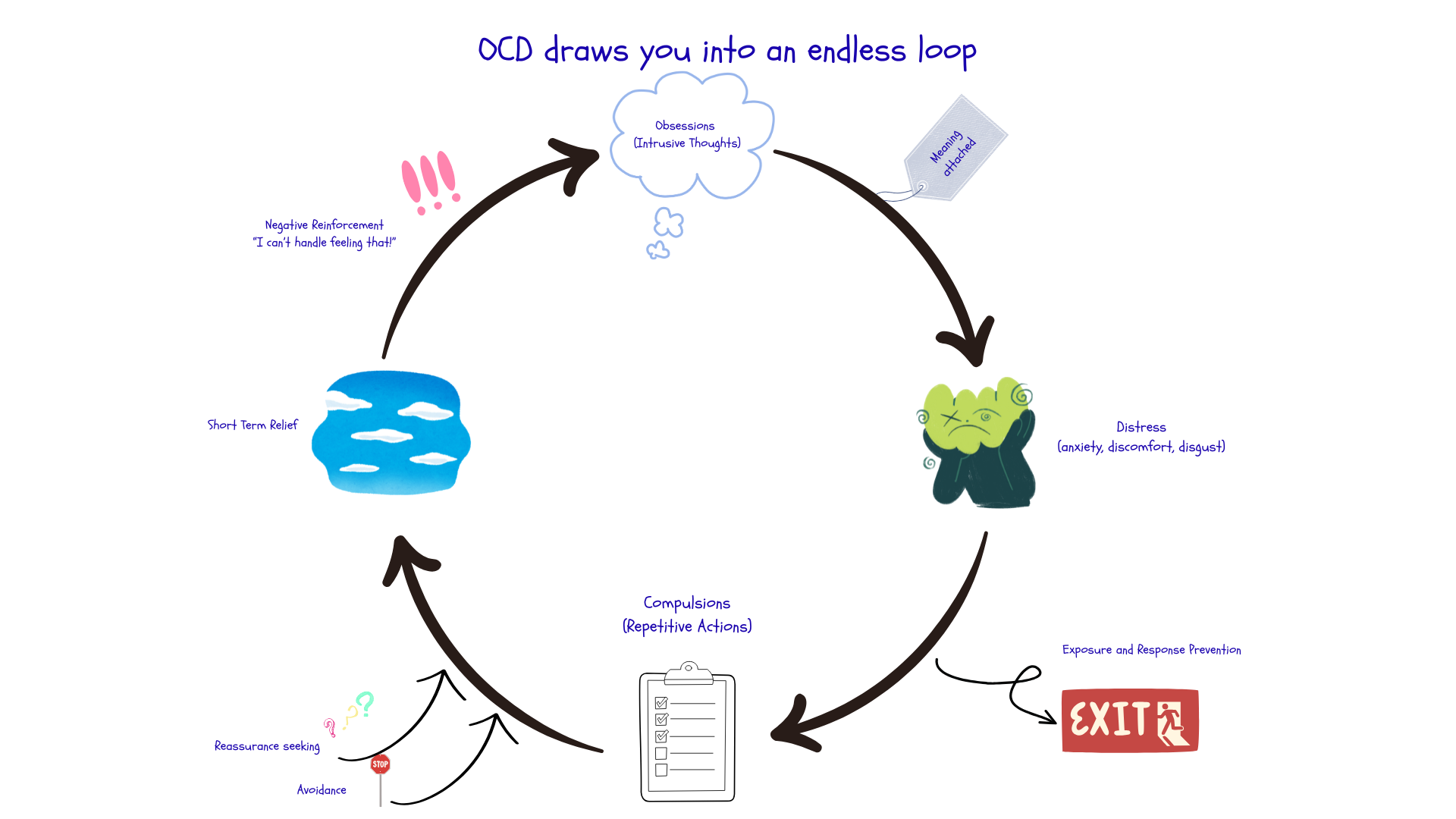What is OCD?
You might hear people call themselves and behaviors “OCD” all the time. But what really are the core symptoms of OCD?
OCD is characterized by two main features: obsessions and compulsions. Their interaction creates a distressing cycle that can significantly impact daily life.
Obsessions
Obsessions are intrusive, unwanted thoughts, images, or urges that repeatedly enter your mind—often uncomfortable, scary, embarrassing, or nonsensical. Though some obsessions, like fear of contamination, occur more frequently, each person’s experience is unique.
Compulsions
Compulsions (or rituals) are repetitive mental or physical actions you feel compelled to perform in response to obsessions. These behaviors aim to reduce anxiety or prevent feared outcomes, but often feel excessive or irrational—even if they make sense to you.
You may feel intense anxiety, frustration, or discomfort until you complete these rituals. While compulsions can offer momentary relief, they paradoxically reinforce the obsession cycle—making distress more persistent.
It's not just the presence of obsessions and compulsions—but their frequency, intensity, and impact—that signals OCD.
When these patterns:
Consume hours daily
Interfere with school, work, or relationships
Cause significant distress
…that indicates OCD may be present.
Common OCD Themes
While individual experiences vary, many obsessions and compulsions fall into recognizable categories:
Contamination (e.g., fear of germs or dirt)
Harm (e.g., worry about accidentally hurting someone)
“Just right” or perfectionism (e.g., things must feel or look exact)
Checking (e.g., ensuring doors are locked or appliances are off)
Religious / moral scrupulosity (fear of sins, blasphemy)
Taboo thoughts (intrusive sexual, aggressive, or blasphemous ideas)
Hoarding (when driven by obsessive fears rather than attachment)
The OCD Cycle
Obsession: An intrusive thought emerges (e.g., “What if I didn’t turn off the stove?”)
Anxiety: The thought triggers intense apprehension
Compulsion: You engage in a ritual (e.g., checking the stove multiple times)
Temporary Relief: Anxiety fades—briefly
Repetition: The cycle restarts as the obsession returns
Breaking this cycle is key to reducing OCD’s hold.
Round and round on the OCD Cycle
In Summary
Obsessions = intrusive, distressing thoughts or urges
Compulsions = repetitive actions aimed at alleviating anxiety
OCD = when this cycle becomes time-consuming, distressing, and disruptive
Themes are common—but your fears and rituals are uniquely yours
Understanding this framework can empower you to seek effective treatment approaches—such as ERP (Exposure & Response Prevention)—that target both obsessions and compulsions.

